Chemistry Unit 3
1/23
There's no tags or description
Looks like no tags are added yet.
Name | Mastery | Learn | Test | Matching | Spaced |
|---|
No study sessions yet.
24 Terms
What are autotrophs (self-feeders)?
photosynthetic organisms that make their own food from ions and molecules
Non-photosynthetic organisms are __________, or different-feeders.
heterotrophs
How does photosynthesis harness sunlight to make carbohydrates?
converts electromagnetic energy to chemical energy requiring sunlight, carbon dioxide, and water (with oxygen as a by-product).

Write the chemical equation for photosynthesis.
CO2 + H2O + light energy —> (CH2O)n + O2
Photosynthesis consists of what two sets of reactions?
Calvin cycle reactions and light-capturing reactions
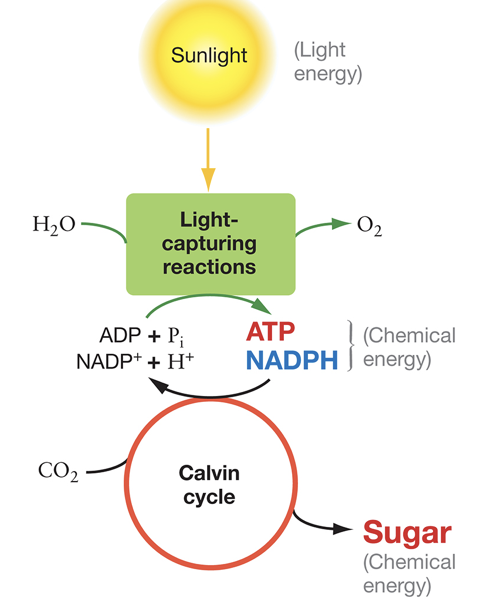
Describe the Calvin cycle reactions during photosynthesis.
reactions produce sugar from CO2, and electrons and ATP are used to reduce CO2
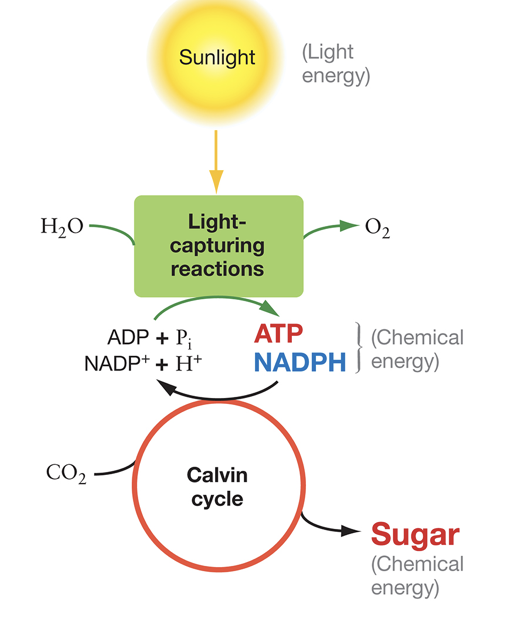
Describe the light-capturing reactions during photosynthesis.
produce O2 from H2O, water splits to form O2, excited electrons are transferred to electron carrier NADP+ to form NADPH
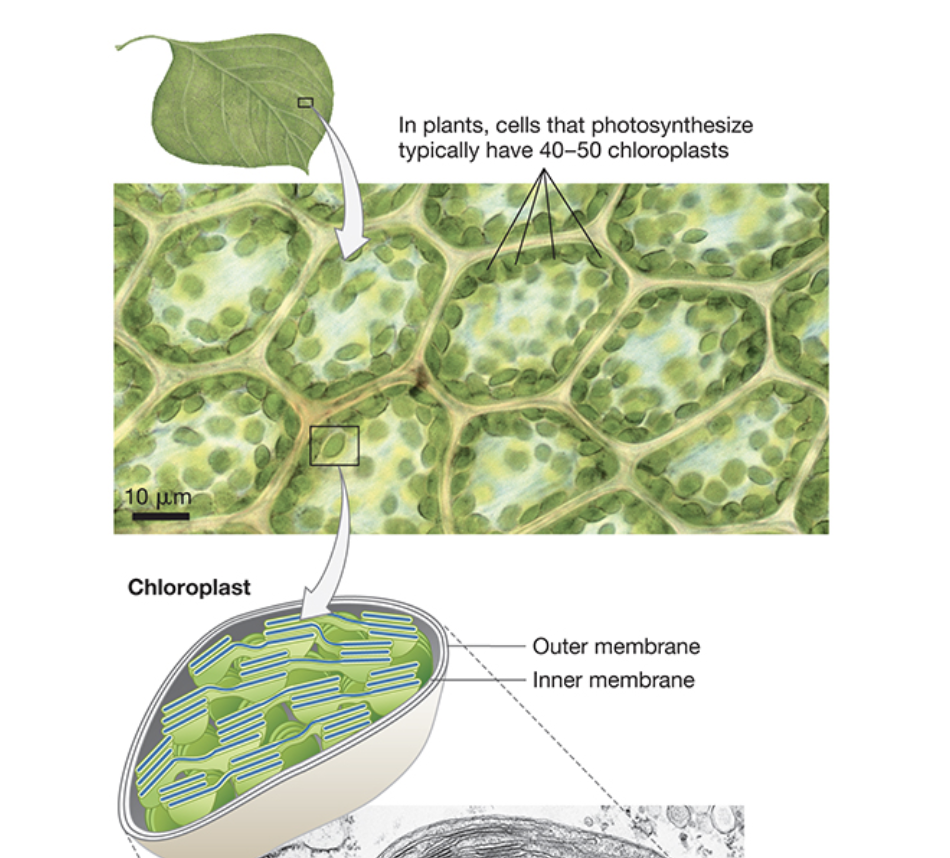
Where does photosynthesis occur?
chloroplasts
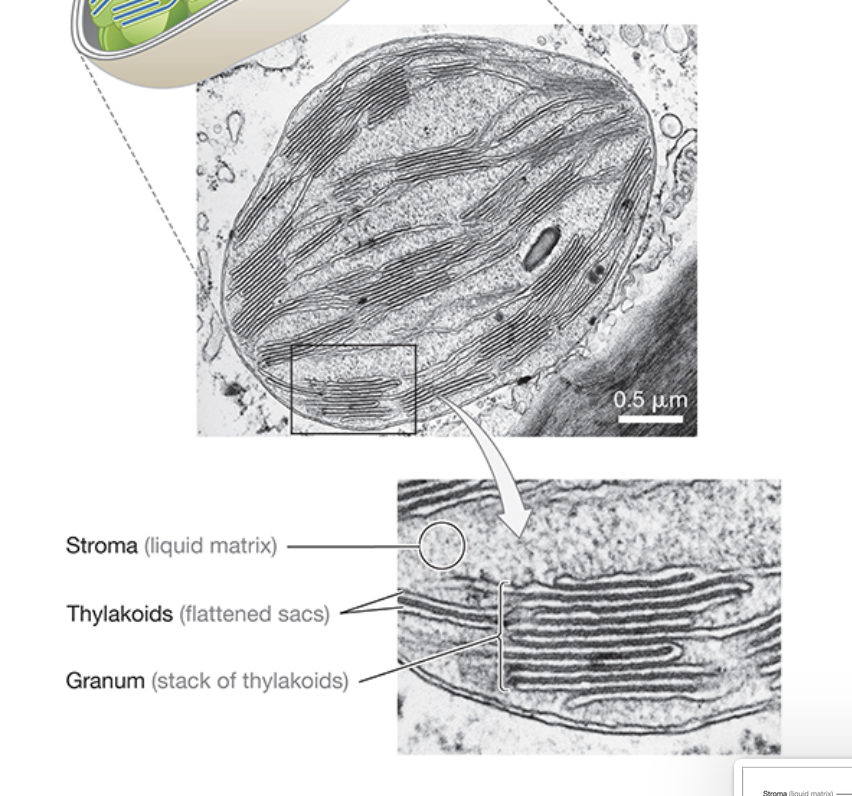
Describe the inner membrane of chloroplasts.
filled with thylakoids, stroma, and granum
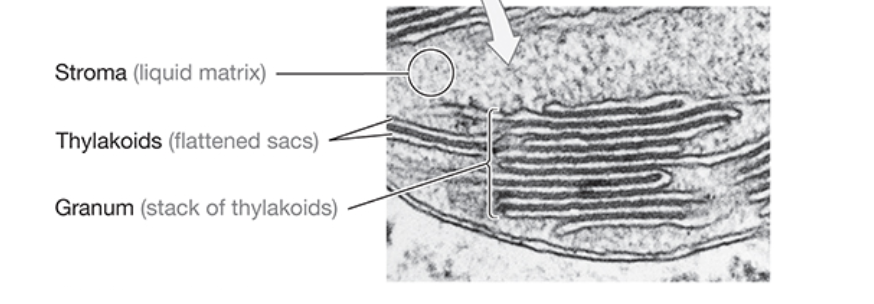
What is the stroma?
fluid-filled space between thylakoids
What is the lumen?
the space inside the thylakoid
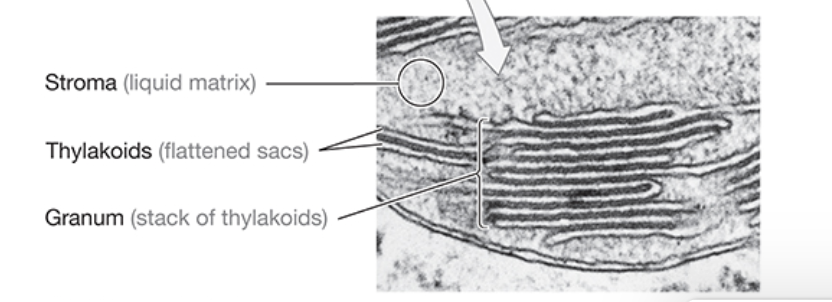
What is the name of the flattened vesicle-like structures on the interior of the chloroplast?
thylakoids
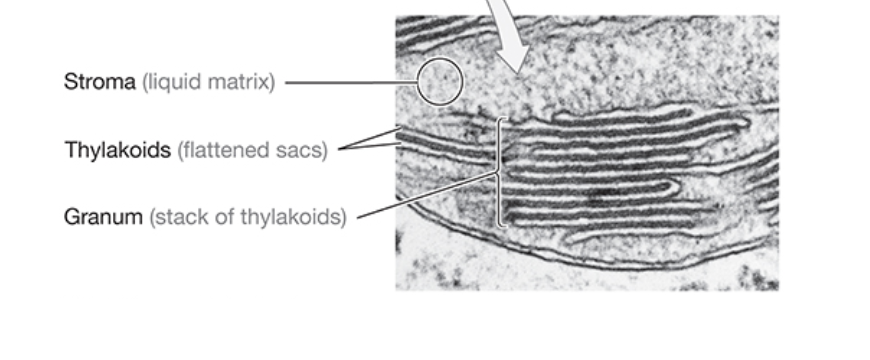
What is grana?
interconnected stacks of thylakoids within a chloroplast
Thylakoid membranes contain large quantities of pigments, which absorb only certain wavelengths of light. What is the most common pigment in chloroplasts?
chlorophyll
Describe the color and function of chlorophyll
reflects green light, responsible for green color of plants and algae
Light is a type of ______________ _________.
electromagnetic radiation
How do pigments capture light energy?
by absorbing specific wavelengths of visible light and transforming it into chemical energy through photosynthesis
Each photon and wavelength have a specific amount of energy — is the energy of photon of light proportional to its wavelength?
inversely proportional

_________ wavelengths have more energy than ________ wavelengths.
shorter, longer
What do photons do when they strike an object?
can be absorbed, transmitted, or reflected
What are the two major classes of pigment and plants and what do they absorb and reflect?
chlorophylls — absorb red and blue light, reflect green
carotenoids — absorb blue and green light, reflect yellow, orange, and red
What is the action spectrum for photosynthesis?
wavelengths that drive light-capturing reactions, most effective with pigments that absorb blue and red photons

What is the absorption spectrum for pigments?
measures how wavelength of photons influence amount of light absorbed by pigment